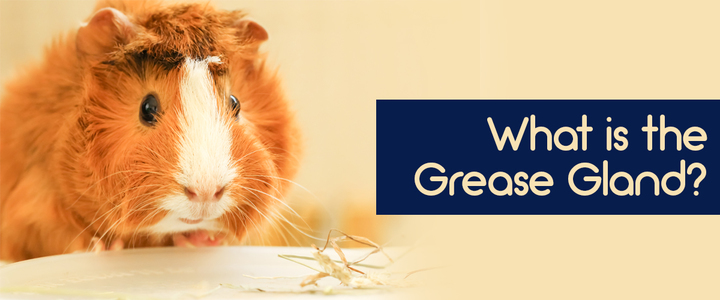You may have noticed a gunky spot around the area where you’d find your guinea pig’s wannabe tail. The grease gland, also known as the caudal gland, produces secretions for scenting and marking purposes. True to its name, the dime-sized area emits an oily, greasy, or waxy substance. A little yucky, but totally normal.
Do All Guinea Pigs Have Grease Glands?
While all guinea pigs – both male and female – have grease glands, some are much more active than others. Male guinea pigs are particularly prone to the mucky stuff building up back there, but it can still occur in some gals. The grease gland may be virtually invisible and suddenly come to life during puberty or new situations. Guinea pigs that like to strut their stuff and show pals they’re boss or those that are newly introduced may have more active grease glands as well. Makes sense, given this feature exists especially for marking territory.
Cleaning the Grease Gland
Quick grease gland checks are a recommended part of normal care and grooming. While it won’t cause problems for most guinea pigs, some pigs with extra active grease glands might need help with keeping it clean. Letting the gunk continuously build up can cause irritation and even infection. It’s also easier to clean if addressed regularly before you’re dealing with a big, clumpy mess!
To find the grease gland, trace your fingers down the spine to the tailbone. Around that area, you may find a spot that is a little sticky. This is normal, but take the opportunity to check for any redness, dry skin, or soreness. A dirty grease gland tends to look like a bunch of dark earwax stuck to the fur on the rump.
Long-haired wheekers may need a little booty trim to make the job easier. While a bum bath may be in order anyway for those pigs with long, luscious locks, you might find it doesn’t totally take care of the grease gland goop. A more effective solution is to break down the grime with a natural degreasing element first. Coconut oil is a safe and popular favorite. Olive oil can also work in a pinch. You may need to let it sit for a bit and even repeat the process the following day until some warm water and a mild detergent can finish the job.
Grease Gland Problems
Problems with the grease gland aren’t common, but are certainly possible. If the area is raw, hot to the touch, bleeding, or is obviously tender, seek advice from an exotic vet. An infected grease gland may need to be cleaned professionally before the vet prescribes a guinea pig-safe topical and/or oral antibiotic. Your vet can also help rule out other skin problems, such as parasites or fungus, or a sebaceous cyst. If your guinea pig is prone to problems with the grease gland, talk to your vet about the best way to keep the area clean at home and prevent recurring problems.





